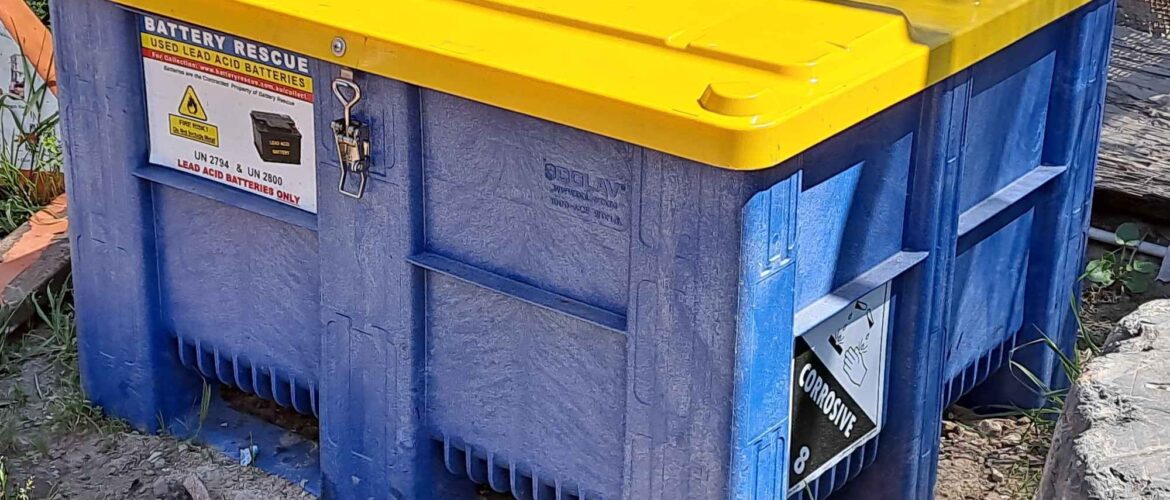Uniseg Products sister company Battery Rescue has run a demonstration battery collection service in Western Australia since 2015. The company has predominantly used Uniseg’s Battery Transport & Storage (BTS) Container for its collection service however it has also deployed a limited number of Plastic Battery Bins to test the pros and cons of each.
The battery bin or battery box, pictured below, were introduced in 2018 and were offered to all our customers as an alternative to the BTS Container. We wanted to test this heavy duty plastic bin against the BTS Container and offered our customers a higher return for their batteries, to reflect their lower costs. Approximately about 10% of our customers or 2% by volume accepted the Plastic Bins, usually because we were able to pay them more for their batteries.
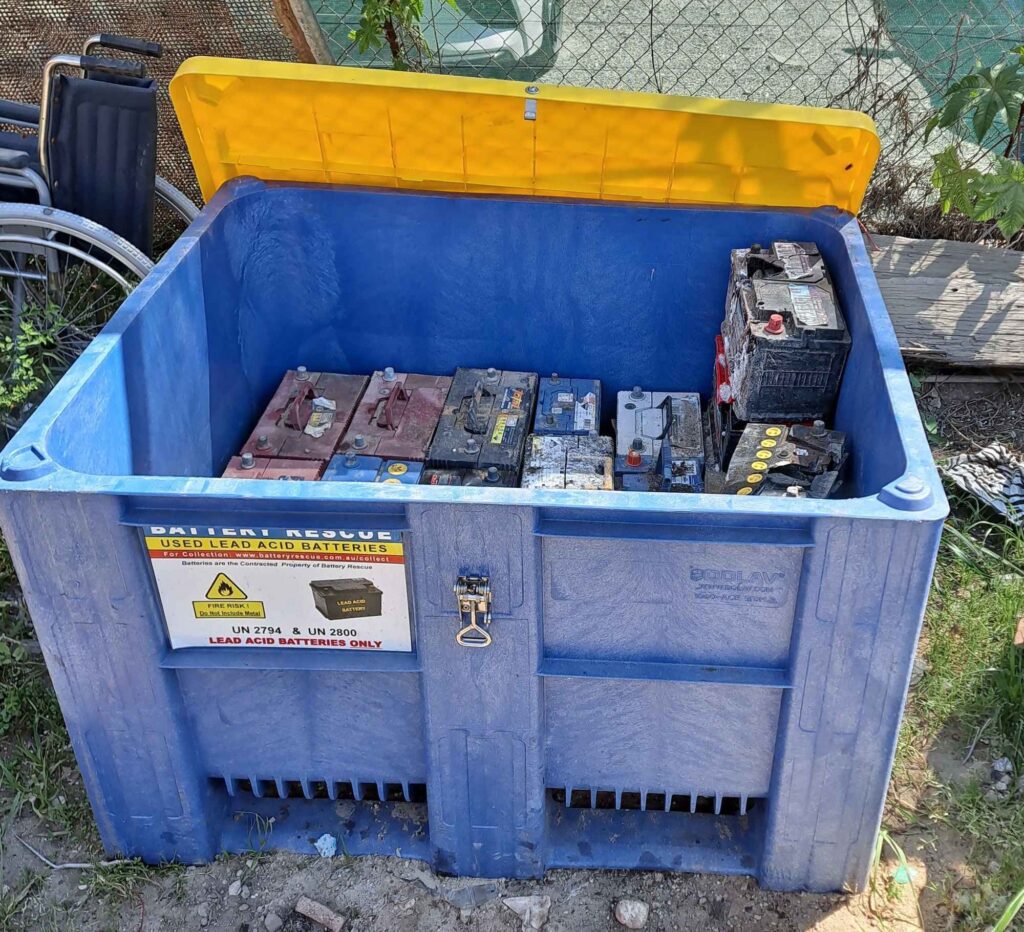
Advantages of the Battery Transport & Storage (BTS) Container
The most significant result was that most of Battery Rescue’s customers, especially the Government Waste Facilities and Mining Customers, would not accept the plastic bins citing safety concerns with lowering heavy batteries into the bottom of the bin. This confirmed to us that the front load feature of the BTS Container, that allowed our customers to step into and place their batteries into the container, was a critical advantage when compared to battery bins.
In addition, it was found that the floors of these plastic battery boxes were more prone to cracking. These were easily repaired using a plastic welder. We suspect this is due to operators dropping rather than lowering heavy batteries, some up to 50-60kg, into the bottom of the bin. This is not an issue with the BTS Containers due to the front load feature allowing batteries to be placed into the container without extra back strain.
Battery Rescue found that the collapsible feature of the BTS Containers made them more efficient for storage and transportation when empty. If there was limited space in the yard or on the vehicle this was an important feature.
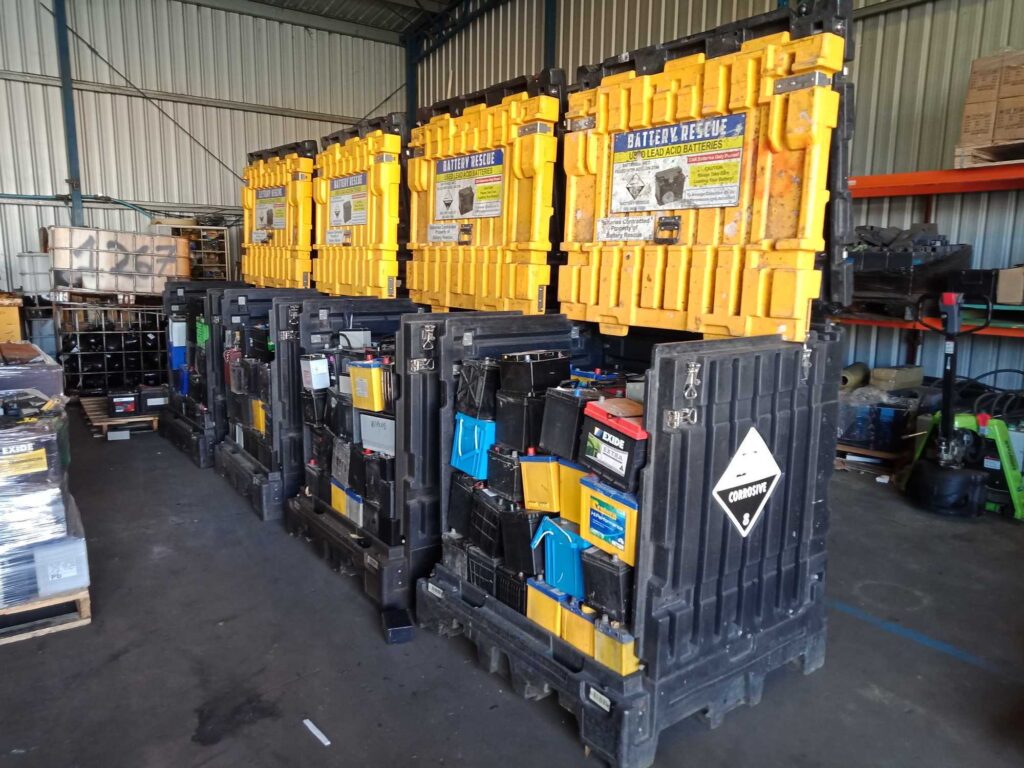
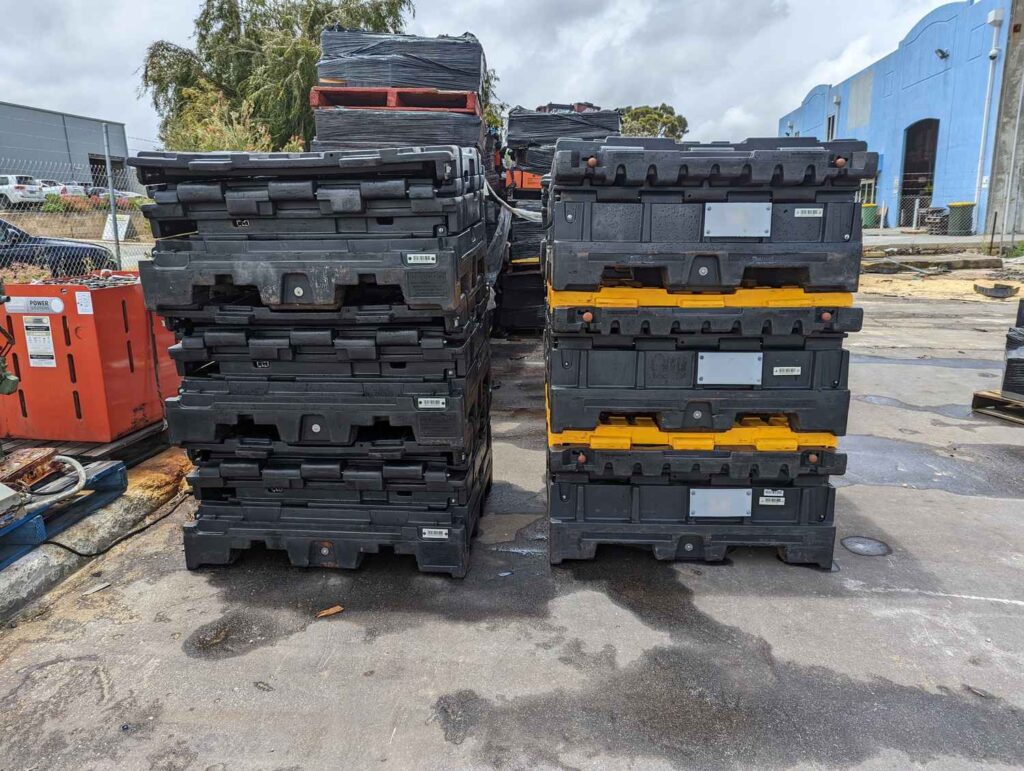
Meeting The New Transport Requirements for Used Lead Acid Batteries
Recent changes to the regulation governing the transportation of used lead acid batteries have highlighted additional benefits of the BTS Container compared to plastic battery bins.
The UN Sub-Committee of Experts for the Transport of Dangerous Goods approved a new Packing Instruction (P801) for transporting wet, lead acid batteries, in June 2018. The main changes clarified the requirements for using plastic bins for transporting used lead acid batteries. Many countries have adopted the UN’s model regulations into their own regulations.
The new provision for plastic bins are:
(2) Stainless steel or plastics bins may also be used to transport used batteries.
Additionally, the following conditions shall be met:
(a) The bins shall be resistant to the electrolyte that was contained in the batteries;
(b) The bins shall not be filled to a height greater than the height of their sides;
(c) The outside of the bins shall be free of residues of electrolyte contained in the batteries;
(d) Under normal conditions of transport, no electrolyte shall leak from the bins;
(e) Measures shall be taken to ensure that filled bins cannot lose their content; and
(f) Measures shall be taken to prevent short circuits (e.g. batteries are discharged, individual protection of the battery terminals, etc.).
The use of a battery bin with a lid is the obvious way of meeting the requirement of clause 2e, however in practise we have found this to be quite problematic for several reasons. The most common issue is that customers will often stack batteries to exceed the height of the bin’s sides, thereby contravening the requirements of 2b but also making it impossible to secure the lid prior to transport. The collector is then required to either remove or restack the batteries to resolve this issue.
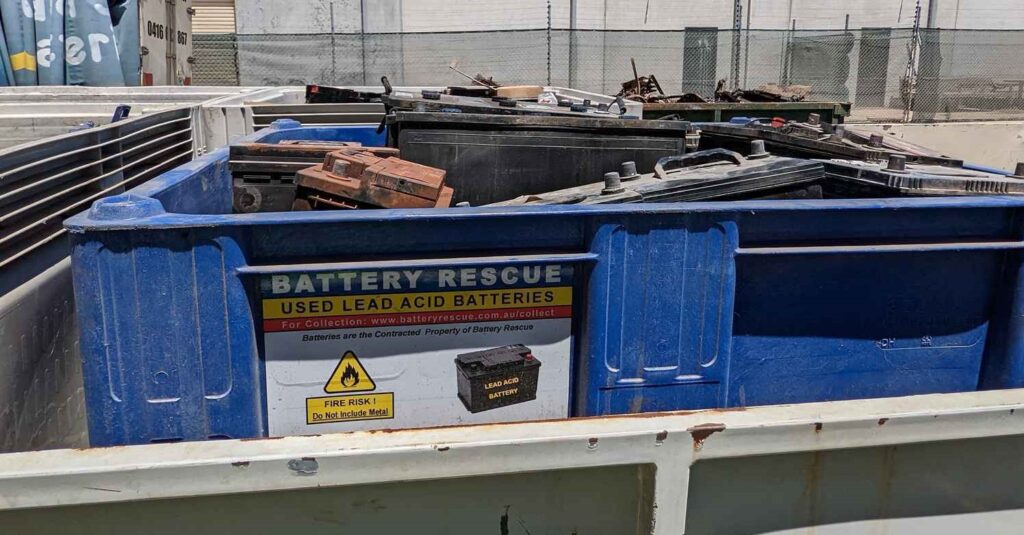
Depending upon the height of the batteries being stacked into the plastic bin, meeting the above requirements could result in significant under utilisation of the bins total storage capacity with this inefficiency flowing through to the transport phase. This could result in a customer having to be supplied additional bins to meet their requirements.
Battery boxes with a lid are frequently used by Battery Rescue’s customers to store their used batteries, outdoors. This is often due to insufficient indoor space. The lids unfortunately would be blown off in strong winds and consequently needed to be secured by other means (perhaps it is no surprise that this was a couple of heavy batteries).
And lastly a lid that is not permanently attached to the bin are sometimes misplaced or lost. This means spare lids need to be carried on the collection vehicle so that the battery bin can be transported.
In comparison the BTS Container does not have a loose lid (it is permanently attached) so it cannot be lost or blow off, so is much better suited to outdoor storage. It is also much more difficult to overfill the BTS Container and much easier to remedy if it is.
Advantages of Battery Bins
The primary advantage of plastic bins is the cost. They are typically half the cost of the BTS Container, when including a lid.
Using a high-pressure water gun they are easier to manually clean than the BTS Container, due to the smooth inside surfaces and reduced weight (35kg vs 95kg) making them easy to manoeuvre by hand.

